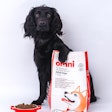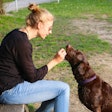
Between 2012 and 2017, while worldwide pet food sales reached new heights, several developing nations supplanted established pet food powerhouses in terms of annual sales. For example, since 2012, Brazil rose to replace the United Kingdom as the second largest pet food market globally, up from number six. Jared Koerten, senior food analyst at Euromonitor International, presented data to back up those assertions about the dynamic global pet food market during his presentation at the International Processing and Production Expo in Atlanta, Georgia, USA on January 30, 2018.
Pet care sales reached a global total of US$110 billion in 2017, according to Euromonitor figures. The pet care industry’s compound annual growth rate (CAGR) hit five percent between 2012 and 2017, with an incremental growth of US$2.2 billion over those five years.
“We see a lot of emerging markets really jump off the page,” he said. “Looking at markets like Brazil, Russia, Mexico and China, which continue to post really strong growth, there is an emerging middle class there. They are really becoming pet owners and driving strong growth this growth in those markets. This growth in these Emerging Markets has created sort of a new group of leaders.”
The United States remained Earth’s pet food sales alpha wolf in 2017, but other nations have shifted ranks in the pack. Right next door, the US now has a new top pet food market neighbor, he said. Mexico’s pet food sales overtook Canada’s between 2012 and 2017. The Mexican pet food market now ranks tenth with Canada in eleventh place.
Brazil rises to second largest pet food market
In Brazil, Koerten said, unlike in the US where pet food companies wage marketing wars to establish their premium or superpremium position and thereby drive sales value growth, the economy pet food segment sees strong competition in Brazil that helps drive the market.
For example, Purina relaunched an economy dog food line, Bonzo, in Brazil. Purina nixed that line several years ago, but huge competition in the economy pet food segment incentivized Bonzo’s revival, he said.
“A lot of these are emerging middle class consumers,” he said. “They might be becoming first time pet owners. They don't have the income necessarily to trade up to superpremium or very premium foods. So, they're just looking for something to give good nutrition to their animal.”
Russia and China also rising in pet food sales rankings
Formerly in ninth place, Russia moved up to become the seventh largest pet food market. Koerten noted that in Russia, Purina introduced Moya Sobaka, a kibble+ formulation. This style of dual texture pet food is similar to a trend in the US and was marketed to smaller dogs, also like in the US.
“Then of course China, which has grown up very quickly and is moving up the ranks very rapidly,” Koerten said.
China now ranks as the twelfth largest pet food market. In 2012, the Middle Kingdom was ranked 19th.
Despite all these gains by other nations, the United States was by far the largest pet food market in 2017, as it was in 2012. In 2017, the US accounted for almost 42 percent of the total global amount spent on pet care, according to Euromonitor data.
“You'd be hard pressed to find any other industry where the US has that big of a share of total global sales,” he said.



















